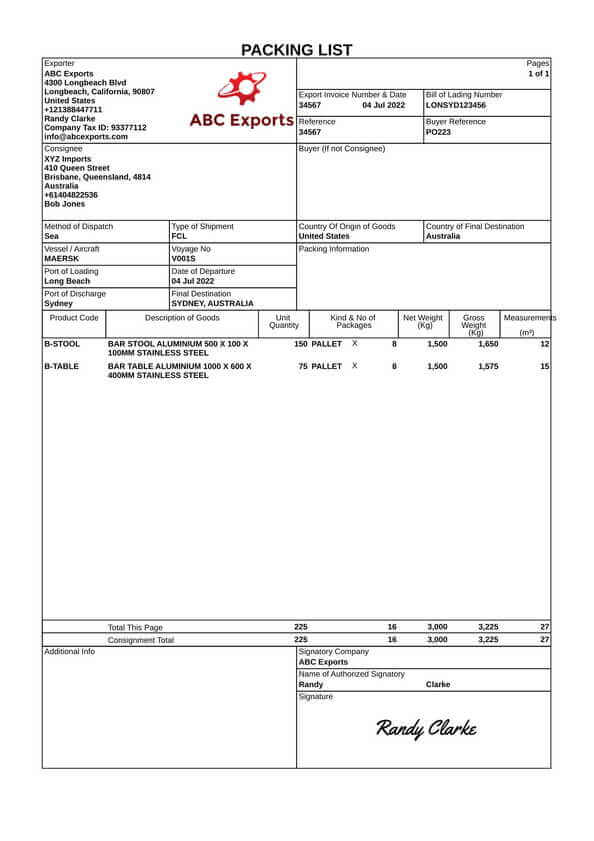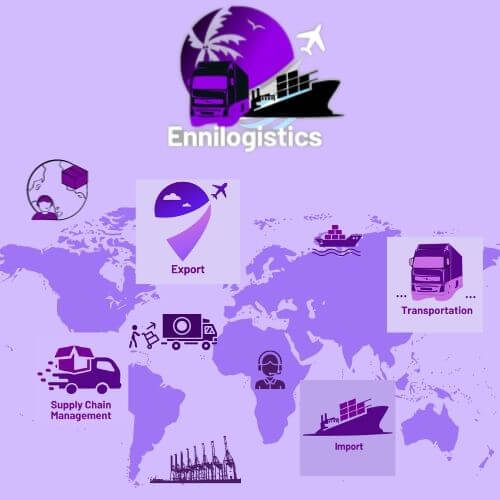A packing list is a more important document in international trading. It is mentioning physical details regarding shipment. when transporting goods from one point to another It is necessary to know details about products or items that are including a shipment.
What is a packing list?
A packing list is a list mentioning details of goods that are in the package. This includes information on goods with weight and volume value of goods in each individual box.
A packing list is a mandatory document when shipping goods.
The packing list should include accurate details because it is used to create a Bill of lading.
Packing list details and B/L details should match the custom clearance process. Because most of the countries required details tally with B/L and packing list for the customs clearance process.
Why and when use a packing list?
When goods need to be shipped exporter/seller needs to create a packing list for the consignee or importer.
The reason for creating a packing list
The general purpose of a packing list is for anyone can identify information about the goods to be shipped. When reading a packing list you can get a clear idea of the shipment.
Who creates a packing list?
The shipper or exporter is creating a packing list with the dimensions of the goods.
What are the details included in the packing list?
Exporter’s details
Exporter’s contact details -company name, address, company logo, contact numbers, email address
Importer/consignee/buyer details-
Contact details and basic company information of the consignee-company name, address, contact numbers, email address
Shipping details
- Mode of the shipping-sea, air, road, rail
- Shipment type-FCL or LCL, break bulk
- Cargo type-hazardous or dangerous cargo
- Country of origin
- Country of destination
- final delivery place address
- Vessel/aircraft name
- Voyage number
- Port of loading
- Date of departure
- Port of discharge
Items or goods and packaging details
- Product code-HS code
- Description of goods
- Quantity or volume of the units(number of products)
- Number of packages
- Net weight of the package in Kg
- The gross weight of the package in Kg
- Measurements of the package in cubic meters(m3)
Reference numbers and additional information
- invoice number of export
- Date
- Buyer reference number – buyer’s purchase order number
- B/L number (if known)
- Other details(delivery note or other additional information)
Authorized signature
Who uses a packing list?
- Exporter
- Shipper
- Importers
- Freight forwarder
- Customs brokers
- Storekeepers and warehouse employees
- Anyone in the supply chain who needs to identify goods and shipments.
Sample of a packing list,

Importance of a Packing List
When considering international trading packing list is a necessary document. Because a packing list is described all the details regarding goods or items that are expected to import or export.
In the shipping process, your shipment moves from one place to another in one mode to another mode. Sometimes it may have multiple moving points as well as multimodal transportation modes. For ensuring your shipment quality and prevention for damages or contamination it is necessary to know the details of the products inside the package. It is useful to use the right storage method and transport facilities as required.
The Customs clearance process needs a packing list
To identify the goods inside the package it is a must to have a packing list
when exporting goods it needs to measure customs duties and taxes regarding shipment so it depends on the weight and types of the products. so we can see it is a need for customs procedures to calculate the customs duties, taxes, and levis regarding the shipment.
So packing list is a mandatory document for the customs clearance process.
A packing list can use as a shipment’s receipt
packing list that describes all the details of the shipment. Such as the type of cargo, dimensions of the products, weights, and other packing details. It is useful to know whether all the gods are in good condition or not. and also it can be checked all the goods are transported without damages or losses to destination.
At the destination point, we can check the packing list with physical goods. It can ensure the shipment issues such as shortage of the goods or damages of the goods.
For selecting the correct storage facilities
A packing list is a more important document when storing the goods between the origin point and the destination point of transportation. The dimensions of the packages, such as weight, height, and type of the products can be selected for correct storage to minimize damages.
How to create a packing list in a smart way
Before you create a packing list you need to identify your shipment details. Such as product types, dimensions, weight, height, hs codes, and other related details regarding importer and exporter.
you can use your own template in Ms word document format or MS Excel format. It is better to use it with company letterhead. Otherwise, nowadays there are more templates that can be used for creating a packing list.
There are available more websites and tools offering free facilities for creating packing list templates. You can use that kind of free template website to create a high-standard and attractive parking list in a few minutes.
Popular Templates for creating a packing list
Related Posts to Read,
Proforma Invoice And Commercial Invoice
Shipment Arrival Notice/Notification
15 Essential Shipping Documents
Is Electronic Bill Of Lading (E B/L) A New Trend?
Master Bill of Lading(MBL) and House Bill of Lading(HBL): Everything you need to know











